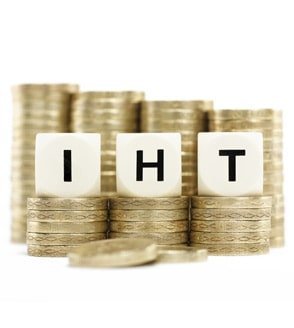With the Chancellor, Philip Hammond, announcing his first Autumn Statement on 23rd November, all eyes will undoubtedly be on him to discover what changes, if any, he will bring to the Treasury. Will he focus all his efforts on economic plans for the country post-Brexit, or will he also make changes to personal tax and, in particular, inheritance tax (IHT)?
Treasury receipts from IHT have increased by 17 per cent in 2015/16 compared to the previous 12 months – and have now reached a record £4.7 billion.
The rise is mainly due to an increase in house prices in recent years, with critics arguing that a tax initially intended to capture only the rich is now being paid by people who are not particularly wealthy but have seen their family home rise in value.
Inheritance tax is currently charged at a rate of 40 per cent of the value of any assets over an individual’s available nil rate band – which is set at £325,000 per person.
However, if the first of a married couple to die leaves everything to the survivor then their nil rate band can be transferred, so that a maximum of £650,000 can be left on second death without paying any tax.
There is also additional relief on the way, with the introduction of a new ‘residence nil rate band’ of £100,000 per person which will take effect in April 2017, and is forecast to further increase to £175,000 per person by 2020/21. There will be a tapered withdrawal of the additional nil-rate band for estates with a net value of more than £2 million. This will be at a withdrawal rate of £1 for every £2 over this threshold.
However, there is some confusion, regarding how this measure will apply, so expert advice should be sought to ensure the tax burden is minimised.
The residence nil rate band will only apply to those leaving their home to their ‘direct descendants’ and details are still to be announced on how the rules will apply to those who have downsized or sold their property in order to move into residential care.
Although the housing market has slowed in the last few months, the weak pound is currently leading to economic warnings that inflation rises are just around the corner, which could result in a rise in house prices and push comfortably well off homeowners into the same tax bracket as the super-rich.
Whether the Chancellor will use his first Autumn Statement to make major adjustments to his predecessor’s IHT plans remains to be seen, which highlights the need for effective planning to ensure this tax is minimised.
By taking advice now, you will have taken all available steps to ensure that the assets you have worked hard to accrue, are passed to your chosen beneficiaries rather than to the tax man.
It is also important to find out how the residence nil rate band will affect you, if at all, and how to put in place plans to maximise available reliefs. For example, no inheritance tax is payable on gifts to charity and it may, in certain circumstances, also be possible to claim relief on business or agricultural assets.
For advice on IHT and estate preservation including all aspects of future tax planning, please contact Salhan Accountants.
















